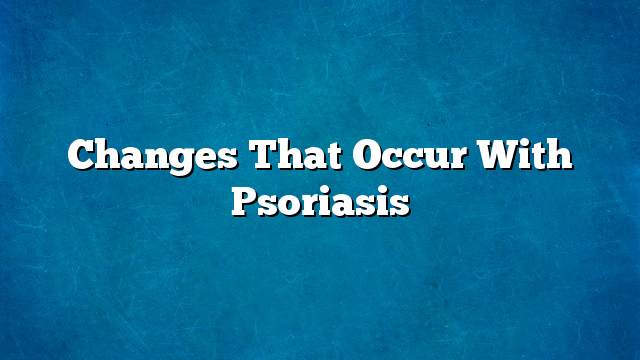It is worth mentioning that the changes that occur in this disease are:
1 – increased proliferation of keratinocyte cells (kerainocyte) in the skin layer
2 – epidermal turnover less than 10 days in patients with psoriasis, compared to 30-60 days in natural persons
3. parakeratosis, the survival of nuclei in stratum corneum cells
4. Irregular growth in thickness of the epidermis over reticular ridges
And a decrease in thickness above dermal papilla, which leads to bleeding in the case of abrasion or scratching crusts, which is called (auspitz’s sign)
5. Neutrophils infiltration of white blood cells into the epidermis
6. The penetration of T lymphocytes into the upper part of the dermis
7 – dandruff and breadth in the vertebrae in the area of the skin papillae.
Psoriasis is a chronic, non-contagious skin inflammation that appears in the form of red spots with silver scales. The most affected areas are the skin of the knees, elbows, the scalp and the lower back area.
2 – The disease spreads in light-skinned people in Europe and North America, the incidence rate is 1-3%, and spread in people aged 15-40.
3. Parents with psoriasis are more likely to transmit the disease to their children than infected mothers
4 – In addition to the genetic factor, there are some factors that stimulate the emergence of psoriasis, including infections and hormones and some medicines and infections (sore throat and AIDS).
5- Psoriasis is divided according to the shape and location of the injury to eight types, namely psoriasis, psoriasis, nail psoriasis, folds, psoriasis, palm rest, psoriasis, psoriasis, psoriasis and redness.
6. The diagnosis of the disease depends on the clinical examination, where the presence of red spots with silver crusts in the spread of the disease.
7. Complications of psoriatic arthritis, secondary infection, increased risk of lymphoma, and increased cerebrovascular disease.
8. Treatment with drugs and radiotherapy includes the use of topical treatment with creams such as cortisone, vitamin D derivatives, A, tar, salicylic acid, radiation therapy such as sun, UVB, oral therapy or injections such as suralin (with UV A), acetretin and methotrexate Cyclosporine and biological materials.
9 – Herbal treatment includes cactus, acetate, red pepper, licorice, fenugreek, walnuts, Brazil, chamomile, the king and other herbs.
1. fitzpatrick’s color atlas and synopsis of clinical dermatology 6th edition
2. Dermatology, Fourth Edition By Richard P.J.B. Weller, John A.A. Hunter, John A. Savin and Mark V. Dahl
3-: //emedicine.medscape.com/
4-herbalremediesworld.com/home-remedies-psoriasis.html
